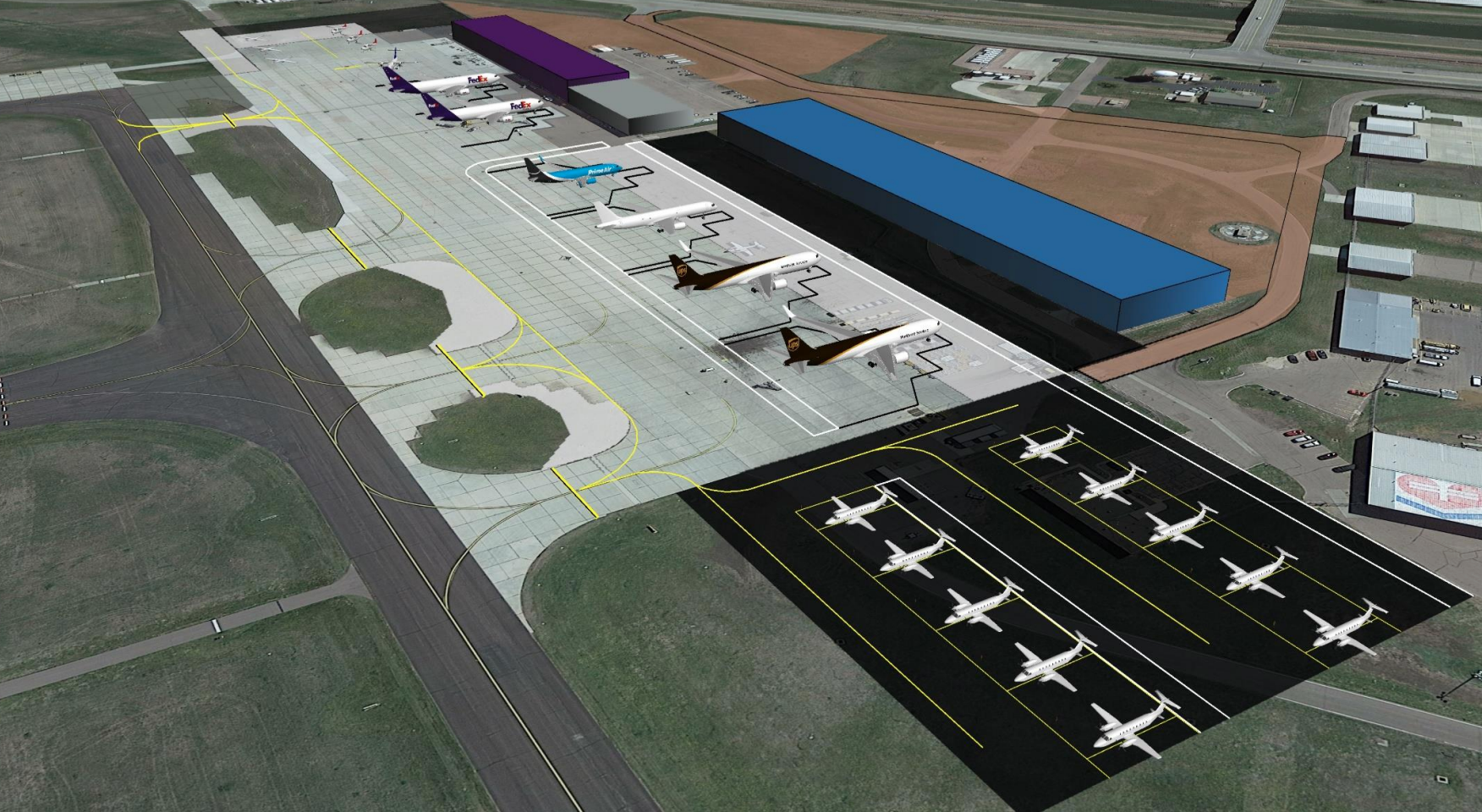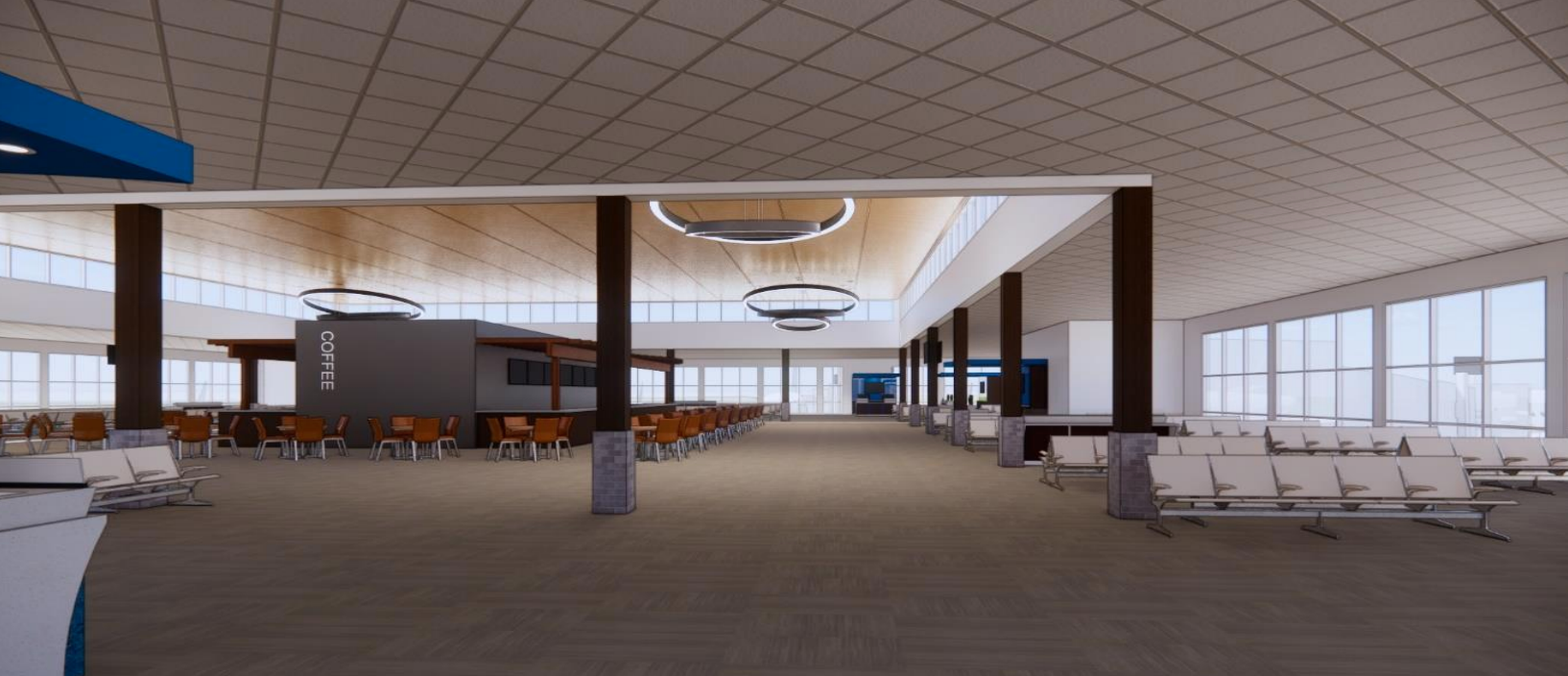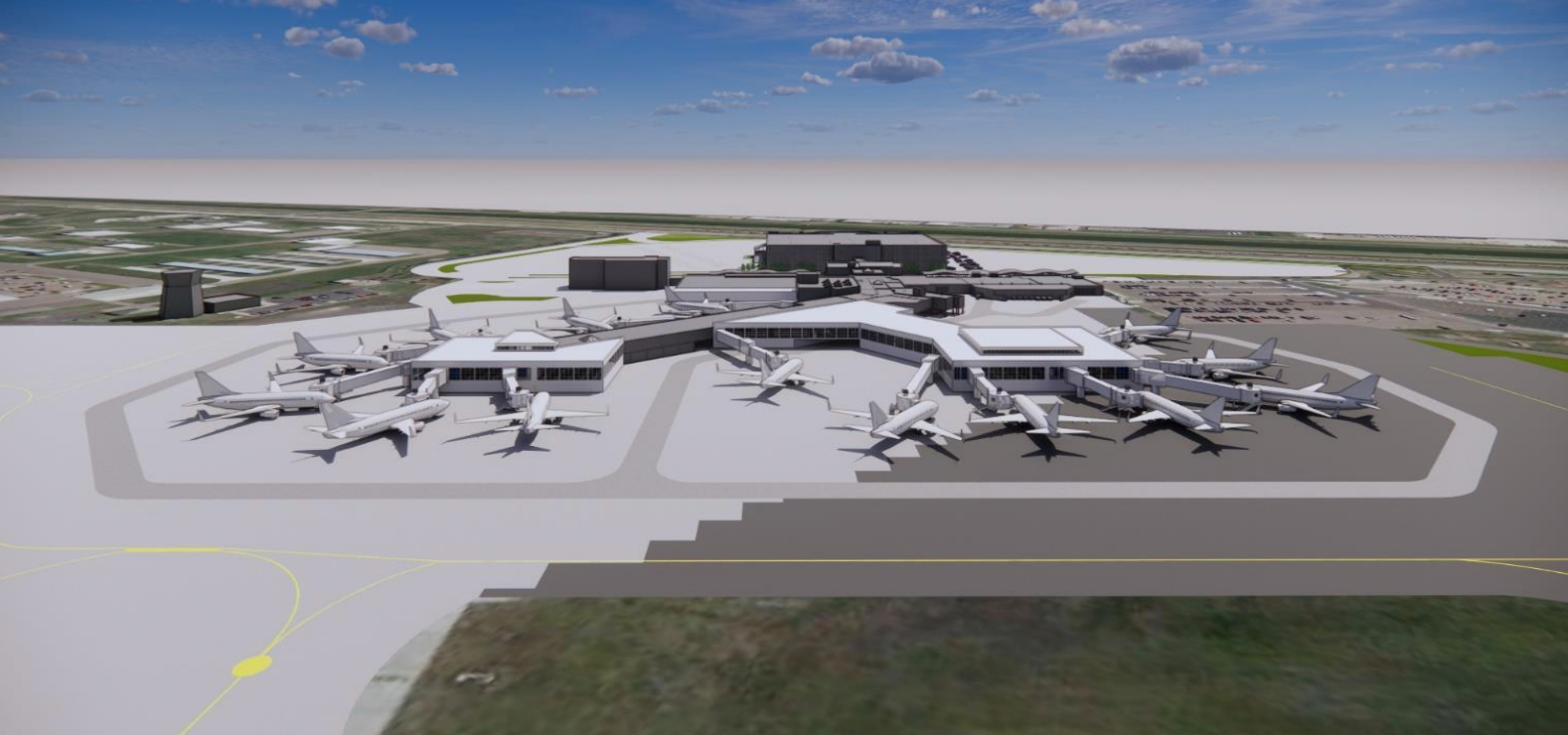Simplified: The Sioux Falls Regional Airport is estimating big increases in both cargo and passengers flying through town in the coming decades. And it's got a $130 million plan to accommodate that growth.
Why it matters
- Sioux Falls has seen demand for travel rebound since the pandemic, and in the next 20 years, projections show the airport going from more than 500,000 passengers annually to nearly 1 million by 2041, according to a presentation from airport Executive Director Dan Letellier to City Council on Tuesday.
- Additionally, as more people shop online, the airport is seeing more demand for space for cargo planes. Projections show the amount of cargo doubling in the next 20 years, especially with Amazon's new facility in town.
- That's why the airport is looking at a $130 million expansion that would double the number of available gates from seven to 14, increase cargo space and include a new air traffic control tower, among other changes. And Letellier said they'll be looking at all possible funding sources – including the City of Sioux Falls.
"The entire community benefits from the airport being here," Letellier said. "We would like to see the city's support."
What are the proposed changes?
Expanding the airport's ability to hold cargo planes and store cargo is a priority.
- Letellier told councilors he'd also like to see Amazon's air operation set up shop in Sioux Falls in the future.
- Here's a rendering of what expanded cargo facilities might look like:

The airport is also looking to add on to the concourse to accommodate more travelers and more flights.
- The first phase would add five gates and 70,000 square feet to the concourse. And the long-term plan is to see a total addition of seven gates to bring the total to 14.
- Plans also include a new concession space. Here's a rendering of what that could look like:

What are the challenges to expansion?
The airport is limited as to where it can expand. It's blocked in by the river and the South Dakota National Guard, so there are only a few possible spots on the existing space that can accommodate additions.
There's also the challenge of funding. When master planning started two years ago compared to now, the costs of construction have gone up significantly.
What happens next?
Finding the funding.
Letellier said he's been in conversations with the state, as well as exploring federal funding options.


